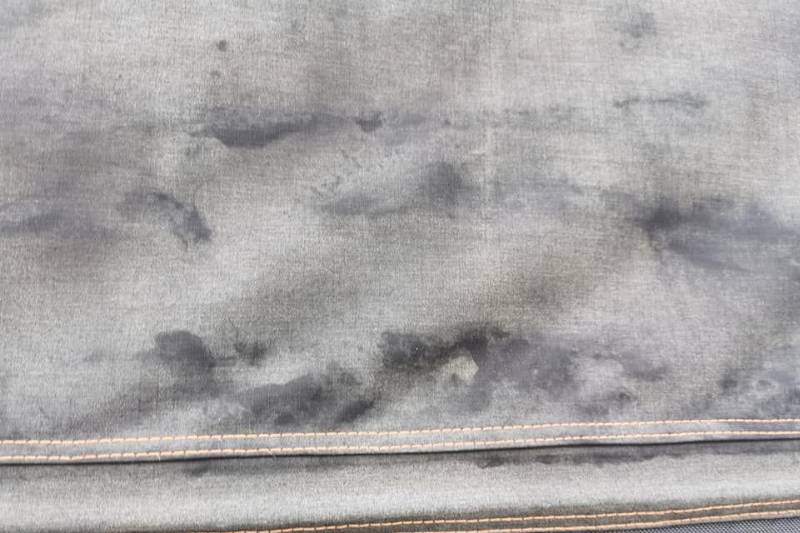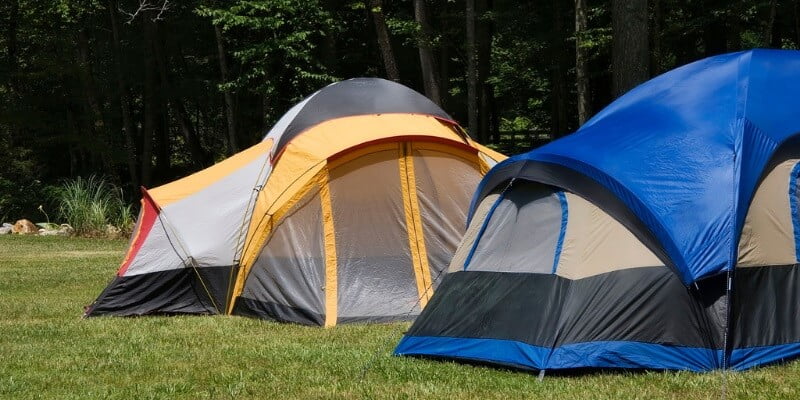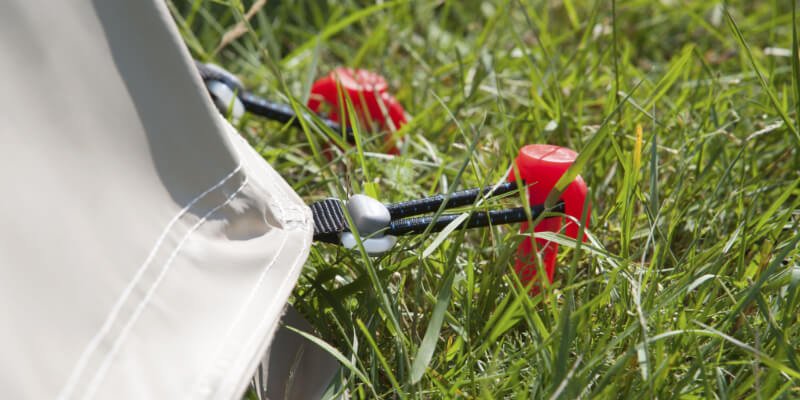How to Store a Tent: 4 Simple Steps
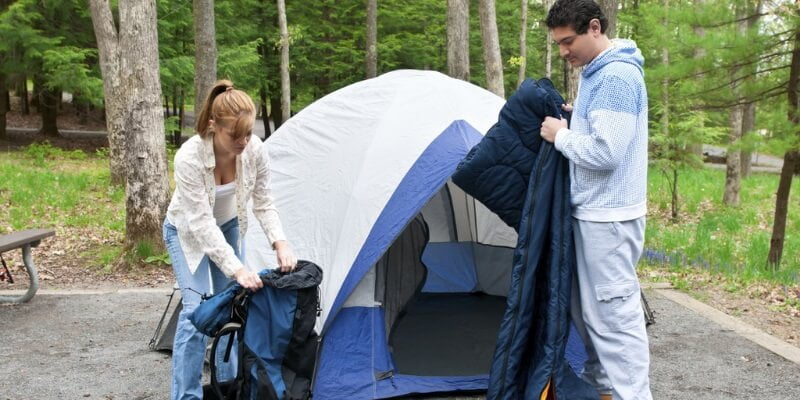
Properly storing your tent after a camping trip is essential for its longevity and performance on future adventures. Just as you carefully set up your temporary home in the great outdoors, taking the time to pack it away correctly is equally vital. In this guide, we’ll show you how to clean, dry, fold, and store your tent, ensuring it remains a reliable shelter for all your journeys ahead.
What Happened If I Store My Tent Incorrectly?
Storing your tent in poor conditions can lead to some unpleasant consequences:
- Mold Growth: Mold can develop on your tent, posing health risks if you sleep in it afterward.
- Stains and Discoloration: Mold leaves unsightly stains that can ruin your tent’s appearance.
- Hydrolysis Damage: Moisture can irreparably damage the water-repellent coating, compromising your tent’s performance.
- Unpleasant Odor: A neglected tent can develop a foul smell, making it feel like you’re camping next to a garbage dump.
4 Steps to Store a Tent After Camping
To prevent damage to your tent, follow these important steps:[/su_note]
- Roughly clean the dirt of your tent
- Completely dry your tent
- Wrap the tent loose and airy
- Store your tent in a cool and dry place
Step 1: Roughly Clean the Dirt of Your Tent

You came back from a camping tour with a dirty tent, right? First, take time to clean your tent properly to extend its lifespan. Exposure to aggressive substances like sea salt, fine sand, and bird droppings can slowly damage the tent fabric’s coating. Remove organic materials such as leftover food, tree sap, and leaves to keep your tent in good condition.
Clean the dirt selectively with lukewarm water and a mild detergent. If you want to renew the UV protection of your tent at the same time, take Nikwax Tent & Gear SolarWash. You can get tree sap with rubbing alcohol. Then your tent is rinsed off with plenty of water.
Step 2: Dry Your Tent Completely

Make sure your tent is dry before packing it away. A damp-packed tent can mold very quickly and develop unpleasant smells. In addition, moisture will damage the water-repellent polyurethane coating over time. This process is called hydrolysis. The coating becomes porous at first and then flakes off. The tent is then no longer waterproof.
To prevent this, pitch your tent outside in the sun for a few hours in good weather. Or dry it on a clothesline in bad weather. Make sure the guy ropes and tent pegs are dry too.
Step 3: Pack Your Tent Loosely and Airy
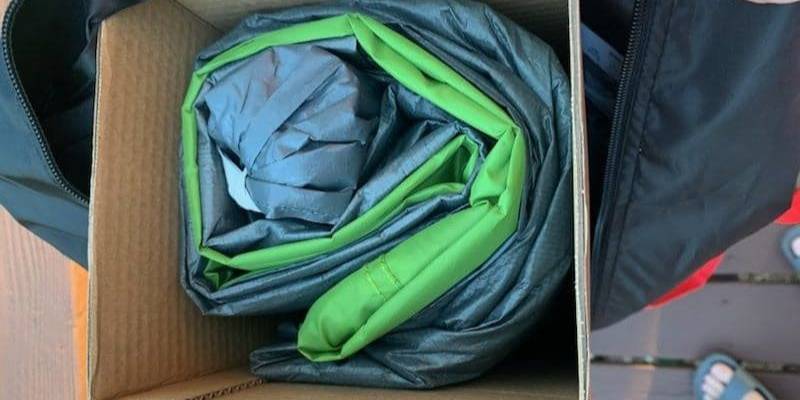
After cleaning your tent and drying it thoroughly, it’s time to wrap it up for storage.
Make the tent fabric loose
The pannier that came with your tent is great for transport, but it’s not ideal for long-term storage. Tent fabric needs to relax and breathe. Instead, use a cotton sack or an old pillowcase that fits your tent. These breathable covers allow residual moisture to escape while keeping dust at bay. You can either fold your tent neatly or stuff it into the bag; loose stuffing is even better. It helps prevent material fatigue by distributing the folds differently each time you pack it.
Reduce the tension on the tent poles
You can increase the life of the elastic bands in your tent poles by storing the poles together. The more segments are plugged into one another, the lower the tension on the rubber. Do you have little space and prefer to fold the bars? Then start in the middle of the bar. This creates two parts. You fold this in the middle again. And where on? This will distribute the tension evenly on the rubber band.
Use packets with silica gel
You know those little white packets that say “Please throw away? Do not consume”? They often contain silica gel, a desiccant that absorbs moisture. Instead of throwing them away, keep them and place them in your tent. They help absorb humidity, protect against mold, and prevent your tent from developing a musty smell.
Distribute several small packets in the tent’s packsack. Plus, you can reuse the desiccant! Regenerate the packets by placing them in the oven at 60–80 degrees.
Pack poles and pegs separately

Sharp edges and corners on poles or pegs can damage tent fabric easily. Pack poles and pegs separately from the tent so that you don’t have more holes than you want in the tent on your next camping tour. That’s exactly why pole bags are useful—they allow you to transport your tent accessories to the campsite conveniently. Emily and I use a pole bag to store our tent poles. It helps ensure we don’t accidentally forget them when heading out, like that time we went camping without our poles!
Protect metal parts from rust
Tent stakes, steel rods, zip slides, and the metal sleeves on your fiberglass rods can rust a little if stored for a long time. This especially happens when the tent is stored in a shed or garage. The rust makes it difficult for you to stick the ends of the tent poles together. The sleeve then no longer slides completely onto the rod. This is a common reason for the bars to break under stress.
We occasionally spray metal parts with silicone care spray to protect against rust. This keeps the poles easier to assemble and ensures zippers slide smoothly, just like on the first day. Remember, salt and sea air can accelerate rust formation, including on your tent.
Step 4: Store Your Tent in a Cool and Dry Place

The ideal place to store your tent is cool, dry, and free from bugs. Additionally, consider these other important factors:
Keep your tent cool
Try to find a cool place for your tent. The ideal temperature is between 10 and 30 degrees Celsius. So don’t keep the tent in hot places like the attic, the trunk of your car, or next to a radiator. Also avoid cold rooms such as the garden shed, where it can freeze. Good storage places are a closet in your living room, under your bed, or a heated cellar.
Take care of bugs and mice
Mice are known to chew on tents, attracted by the smell of food that may have been stored in them. So, avoid storing your tent in areas where critters might roam. Poor storage can also lead to small colonies of beetles nesting in the fabric during winter. That’s why we always store our tents in a bag rather than loosely on a shelf. The bag provides excellent protection against bugs, cobwebs, fly droppings, and dust.
Keep your tent dry
Places like a damp basement, a barn, or even a carport are not good for your mobile accommodation. If you want to store the tent properly, the humidity should be below 55%. The reason is mold spores begin to germinate when the air humidity is high. Living rooms, heated cellars, and garages with access to the house are usually dry enough.
Your tent loves the dark
Your tent doesn’t fare well in the sun because UV radiation can damage it. Over time, the ultraviolet rays can bleach the fabric and make it brittle—sometimes in just a few weeks. To prevent this, never leave your tent outside for extended periods where it can be exposed to sunlight. Even a window pane doesn’t provide complete protection against UV-A rays, and prolonged exposure can eventually degrade the tent bag as well.
Choose a storage location that’s out of the sun to keep your tent in good condition.
Keep the tent away from petrol cans, garlic, and garbage
Have you ever noticed how your jacket smells like smoke after an evening around the campfire? Fabrics absorb odors, and your tent is no exception. If you store it near a gas-powered lawn mower, cleaning products, groceries, scented candles, or even a garbage can, it will pick up those smells. As a result, your first few nights camping might feel like sleeping in a gas station, a lemon plantation, a bed of rose petals, a giant garlic bulb, or even a garbage dump! Keep this in mind when choosing your storage location.
Conclusion: The most important is …
The most important factor is dryness! Thoroughly drying your tent before storage, along with keeping the humidity below 55%, significantly reduces the risk of mold, stains, and bad smells. The ideal storage temperature for your tent is between 10 and 30 degrees Celsius, which helps protect it from UV radiation and allows you to store your tent poles properly.
With these tips and hacks on how to store a tent, your tent will live significantly longer. It will accompany you on your beautiful camping tours for many years!
FAQs:
Here are some frequently asked questions about tent storage:
You can store tents made of cotton, polyester, and nylon in similar ways, but cotton tents are more sensitive to moisture. It’s essential to dry cotton tents thoroughly before storing them to prevent mold growth. Always store cotton tents in a breathable bag to allow any residual moisture to escape.
Can I store my tent while it’s set up?
Yes, if you have the space! Many exhibition tents at dealer stands can remain set up for years without issue. However, your tent must be protected from UV rays, moisture, dust, and vermin. Keep in mind that you’ll need to dismantle and pack the tent before your next camping trip, so storing it while set up may not be very practical.
How long can I store a tent in a row?
With proper storage conditions, a tent can last for many years. I’ve seen tents over 30 years old that still hold up well in autumn storms! To ensure your tent ages gracefully, monitor humidity during storage. High humidity can eventually cause the PU coating, which provides water protection on many tents, to become perforated.
A sticky tent can result from dirt that was packed with it during storage. It can also occur if the tent is kept damp or in a very hot environment, which can damage the water-repellent coating on the fabric. In any case, you should thoroughly wash the tent. If any sticky spots remain, you can rub them with a little talcum powder to eliminate the stickiness.
Should I wash my tent after every camping trip?
It’s not necessary to wash your tent after every trip, but if it’s visibly dirty or has been exposed to harsh conditions, a gentle cleaning is advisable. Always make sure the tent is completely dry before storing it.



